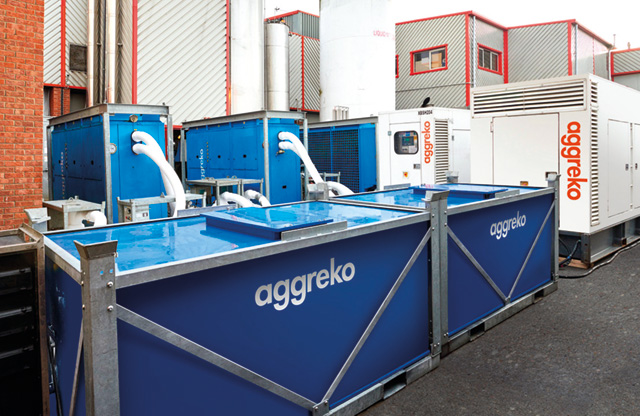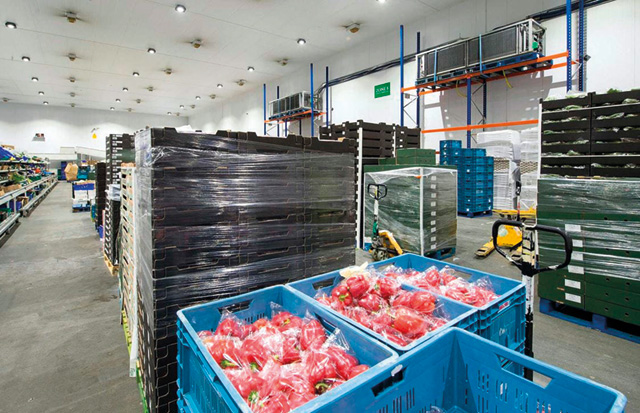
Matt Watson, Temperature Control Specialist at Aggreko Northern Europe, discusses how emergency cold storage units can help manufacturers avoid costly spoilages in the event of system failure, and add capacity during planned maintenance.
It goes without saying that cold storage forms the backbone of a number of key industry supply chains. The pharmaceutical and food and beverage sectors in particular rely heavily on this technology for the preservation of medicines and perishable goods respectively, enhancing product lifespans and allowing them to be transported beyond the immediate locality.
As any store manager can attest, even a slight temperature change in this setting can prove damaging, with stringent quality controls dictating in many cases that retailers must not accept products that have dropped out of a certain temperature range. In a worst case scenario, a system failure can lead entire batches of stock to be consigned to waste, which often results in millions of pounds worth of damage.
Threats to stock
The natural response in the event of a system failure is to lock down the affected store to preserve temperature for as long as possible. However, this is likely to have a knock-on effect for the wider supply chain, so taking quick and decisive action at this juncture is key. Moreover, decanting goods into another store is only likely to draw up a host of logistical challenges.
A popular solution in this situation is the installation of several air handling units (AHUs) inside of the store, with chillers and hoses on the exterior. Though this method provides an effective means of restoring the site to its target temperature, it is not without its drawbacks.
Such a complex arrangement can often take a matter of days to be properly integrated following a system failure, meaning that the products within still face the risk of costly spoilage.

Rapid response
This challenge can be circumvented through the use of a temporary air-cooled low-temperature direct expansion cold store unit. Housed in a modular container, these systems can be quickly installed should an outage strike, allowing the temperature to be rectified before the stock within becomes compromised.
Such a modular contingency solution is adopted by Aggreko, with both air handling units and chillers housed within a singular container with an adjustable range from ambient to -23°C air off, which is designed to fit in a loading bay when trailer-mounted.
Crucially, this approach allows emergency cooling systems to be fully installed and operational within four to six hours, in direct contrast to the two to three days required when installing these elements separately.
Bridging the gap
Moreover, modular solutions can also prove integral to meeting storage capacity during planned maintenance or periods of high demand. Here, unused spaces with a sufficient ambient temperature can be transformed into a temporary cold store, ensuring full compliance with strict temperature control requirements.
By opting for contingency solutions over a costly permanent installation, store managers can meet seasonal demand without investing capital expenditure on equipment that may go unused once demand wanes.
Furthermore, this approach means new equipment can be powered without establishing a connection to the National Grid, as temporary gensets can be used to power the site.
Closing thoughts
System failure and insufficient capacity during periods of peaking demand are without a doubt the two greatest threats to cold storage operations, with both threatening to have a substantial effect on net profits for the wider business.
Moreover, with traditional contingency plans unable to rectify air temperature before product spoilage occurs, there is a clear need for a more time-sensitive response.
Here, operators may benefit from making use of modular contingency solutions, such as those offered by Aggreko. Such an approach allows the cold store to return to full functionality within a matter of hours, while also providing a crucial means of expanding capacity during periods of planned maintenance or seasonal peaks.
www.aggreko.com/en-gb/products/cooling-rentals/chiller-rentals I t: 0333 016 3409

